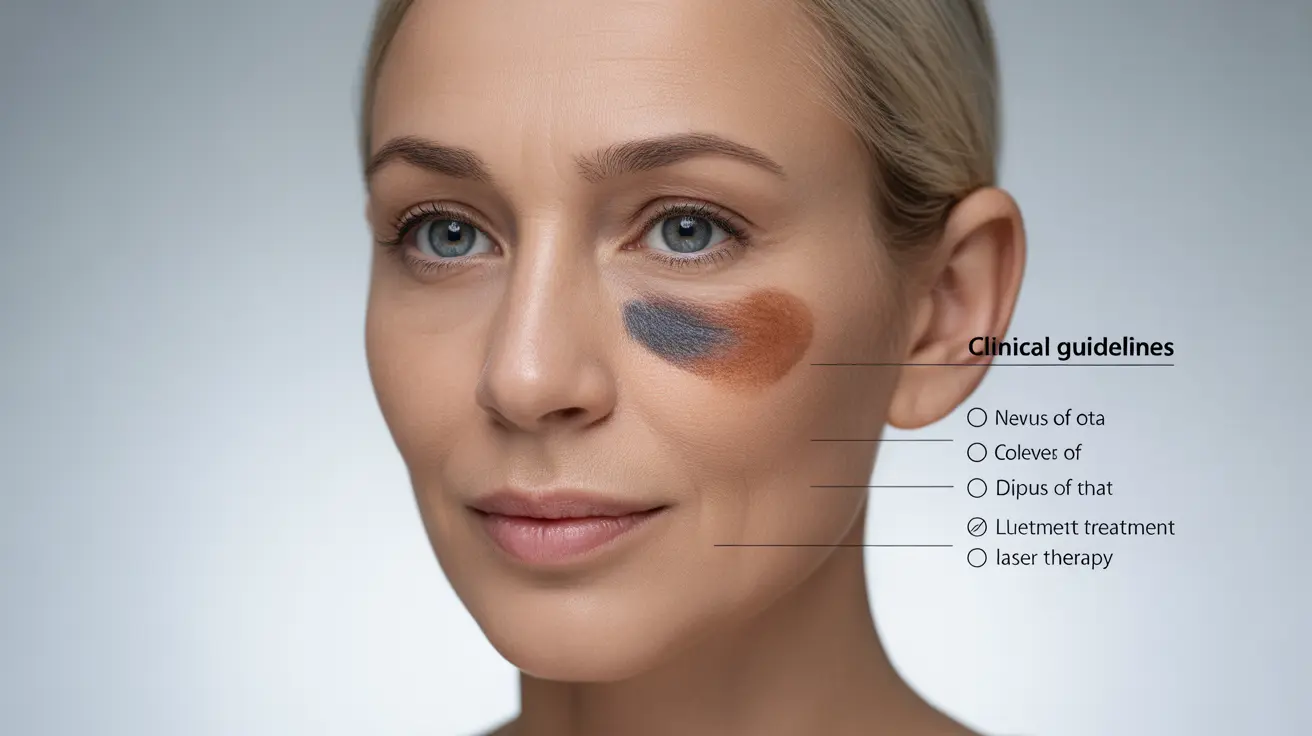Nevus of Ota is a harmless but cosmetically concerning condition characterized by blue-gray or brown pigmentation typically appearing on one side of the face. While many individuals seek treatment for this condition, understanding both natural and medical approaches is crucial for making informed decisions about management options.
This comprehensive guide explores various treatment possibilities, with a special focus on natural methods, while also discussing important factors like sun protection and early intervention strategies.
Understanding Nevus of Ota and Natural Treatment Approaches
Before exploring treatment options, it's essential to understand that nevus of Ota results from melanocytes (pigment-producing cells) becoming trapped deep within the skin during development. While complete natural removal may be challenging, several approaches may help minimize its appearance.
Natural Methods for Managing Pigmentation
Several natural ingredients have shown potential in helping manage skin pigmentation:
- Vitamin C-rich ingredients
- Licorice root extract
- Green tea compounds
- Aloe vera
- Natural sunscreen ingredients
While these natural ingredients may offer some benefits for general skin health, it's important to maintain realistic expectations about their effectiveness for nevus of Ota specifically.
Medical Treatment Options and Their Effectiveness
When considering treatment for nevus of Ota, medical interventions often provide more predictable results compared to natural methods. Q-switched laser therapy has emerged as one of the most effective treatments, typically requiring multiple sessions for optimal results.
Laser Treatment Benefits and Considerations
Q-switched laser therapy works by targeting the deep melanin pigments characteristic of nevus of Ota. The treatment typically requires:
- 4-6 treatment sessions
- Intervals of 2-3 months between treatments
- Proper pre and post-treatment care
- Professional medical supervision
Sun Protection and Preventive Measures
Sun protection plays a crucial role in managing nevus of Ota, regardless of the chosen treatment approach. Excessive sun exposure can potentially worsen pigmentation and complicate treatment outcomes.
Essential Sun Protection Strategies
Implement these protective measures daily:
- Use broad-spectrum SPF 30+ sunscreen
- Wear protective clothing and hats
- Avoid peak sun hours when possible
- Reapply sunscreen every 2 hours
- Use physical barriers like umbrellas when needed
Early Intervention and Treatment Timing
The timing of treatment can significantly impact outcomes, particularly in younger patients. Early intervention may offer several advantages, including potentially better response to treatment and reduced psychological impact.
Frequently Asked Questions
Are there any natural ways to remove nevus of Ota pigmentation from the face?
While natural methods alone may not completely remove nevus of Ota, certain ingredients like vitamin C, licorice root extract, and green tea compounds may help manage overall skin health and pigmentation. However, these should be viewed as complementary approaches rather than primary treatments.
How effective is laser treatment for reducing or removing nevus of Ota?
Q-switched laser treatment is considered highly effective for nevus of Ota, with many patients experiencing significant improvement after multiple sessions. Success rates vary, but many studies report 50-90% pigment clearance with proper treatment protocols.
What risks or side effects should I expect from medical treatments for nevus of Ota?
Common side effects of laser treatment may include temporary redness, swelling, and mild discomfort. Rare complications can include hyperpigmentation, hypopigmentation, or scarring. Working with an experienced healthcare provider helps minimize these risks.
Can sun exposure make nevus of Ota pigmentation worse, and how can I protect my skin?
Yes, sun exposure can potentially darken the pigmentation and complicate treatment outcomes. Consistent use of broad-spectrum sunscreen, protective clothing, and sun avoidance during peak hours are essential protective measures.
Is early treatment better for managing nevus of Ota, and what options are available for children?
Early treatment often yields better results, as younger skin typically responds well to interventions. For children, treatment options should be carefully discussed with healthcare providers, considering factors like age, skin type, and the extent of the nevus.




